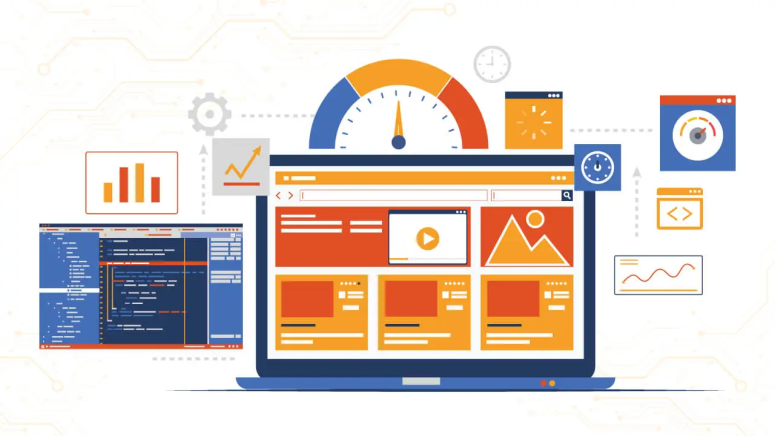
Maximizing Q1 Ad Revenue: Proven Strategies for a Strong Start of 2025
Reading Time: 4 minutes
The start of a new year brings a wave of fresh opportunities for publishers to optimize their ad revenue and set a strong foundation for long-term success. Q1 is particularly critical as it presents the chance to leverage newly allocated budgets, launch impactful campaigns, and tap into shifting consumer behaviors driven by post-holiday trends. With the right revenue optimization strategies, publishers can not only maximize their earnings but also stay ahead in an ever-competitive advertising environment.
In this article, we outline proven tactics and actionable insights to help you make the most of Q1 and kick off 2025 on a high note.
Analyze Q1 Trends and Consumer Behavior
Understanding your audience’s behavior is key to maximizing ad revenue. The post-holiday season sees consumers recalibrating their spending habits. Analyze past Q1 trends to identify:
High-performing ad placements: Determine which formats and platforms resonated most with your audience in previous years.
Target audience preferences: Understand what products or services gain traction during this time.
Optimize Your Ad Inventory


Publishers can increase ad revenue by enhancing the value of their inventory. Here’s how:
Implement header bidding: This technology allows multiple advertisers to bid on your ad inventory in real-time, driving up competition and CPMs by 60%.
Diversify ad formats: Incorporate video ads, and interactive formats to appeal to a wider range of advertisers.
Read More- Driving Ad-Supported Video Streaming Growth With Engaging Ad Experiences
Leverage contextual targeting: Match ads with relevant content to improve engagement and conversion rates.
Leverage Programmatic Advertising
Programmatic advertising continues to dominate the ad tech landscape. It streamlines the ad-buying process and ensures precision targeting. To optimize your revenue in Q1:
Use demand-side platforms (DSPs): These platforms help advertisers reach your audience with hyper-targeted campaigns.
Enable private marketplace deals: Offer premium inventory to select advertisers for higher bids.
Focus on real-time analytics: Monitor campaign performance to make swift adjustments that enhance ad revenue.
Enhance Website and App Performance


Ad revenue heavily depends on user experience. A slow-loading website or app can deter users, reducing impressions and engagement. To improve performance:
Optimize load times: Google shows that a one-second delay in page load time can decrease conversions by 7%. It becomes important for publishers to pay heed to page loading speed for revenue optimization for their website/app.
Ensure mobile-friendliness: With increasing mobile traffic, responsive design is non-negotiable.
Reduce ad clutter: Avoid overwhelming users with too many ads, as this can hurt retention rates and revenue.
Capitalize on Seasonal Campaigns
Q1 is a prime time for seasonal marketing campaigns, including New Year’s resolutions, Valentine’s Day, and the lead-up to spring sales. Publishers should:
Align campaigns with seasonal themes: Create ads that resonate with current events and trends.
Download our Content & Context Calendar to not miss out on upcoming events and monetization opportunities for 2025.
Launch time-sensitive offers: Limited-time promotions can boost engagement and drive conversions.
Focus on First-Party Data
With privacy regulations tightening and third-party cookies on the decline, first-party data has become invaluable. Collect and utilize data from your audience to:
Create personalized campaigns: Tailor ads to individual preferences for higher engagement.
Build lookalike audiences: Use existing data to expand your reach with similar audience segments.
Conclusion
Maximizing Q1 ad revenue requires a mix of data-driven strategies, innovative technologies, and a commitment to delivering value to both advertisers and users. For publishers, focusing on revenue optimization techniques like programmatic advertising, first-party data utilization, video ads, and performance enhancements can ensure a strong start to 2025. Remember, continuous analysis and adaptation are key to staying ahead in the ever-evolving advertising landscape.
Start implementing these strategies today to make Q1 your most successful quarter yet!
Frequently Asked Questions
- Why is Q1 a crucial time for ad revenue optimization?
Q1 marks the beginning of new budgets and campaigns, providing fresh opportunities to attract advertisers and boost revenue. VDO.AI has helped renowned publishers reach their full revenue potential and overcome unwavering revenue challenges. Reach out to us to explore more.
- How does video advertising contribute to revenue growth?
Video ads capture higher engagement rates and offer premium pricing opportunities. Their interactive and visually appealing nature makes them effective in driving conversions and monetization. On average, video ads get 6x more engagement than image ads. Moreover, many publishers have integrated video ads seamlessly into their websites and mobile apps, experiencing noticeable boosts in ad revenue. At VDO.AI, we’ve seen firsthand how video advertising transforms monetization efforts, delivering measurable results and elevating overall revenue streams.
- What are the key tools for monitoring ad revenue performance?
Revenue analytics dashboards, A/B testing tools, and yield management platforms are essential for tracking performance, optimizing strategies, and maximizing revenue potential. VDO.AI provides robust analytics and yield optimization insights to its partners through its comprehensive Publisher Dashboard. Publishers can effortlessly manage their inventory and check revenue potential in one go.






